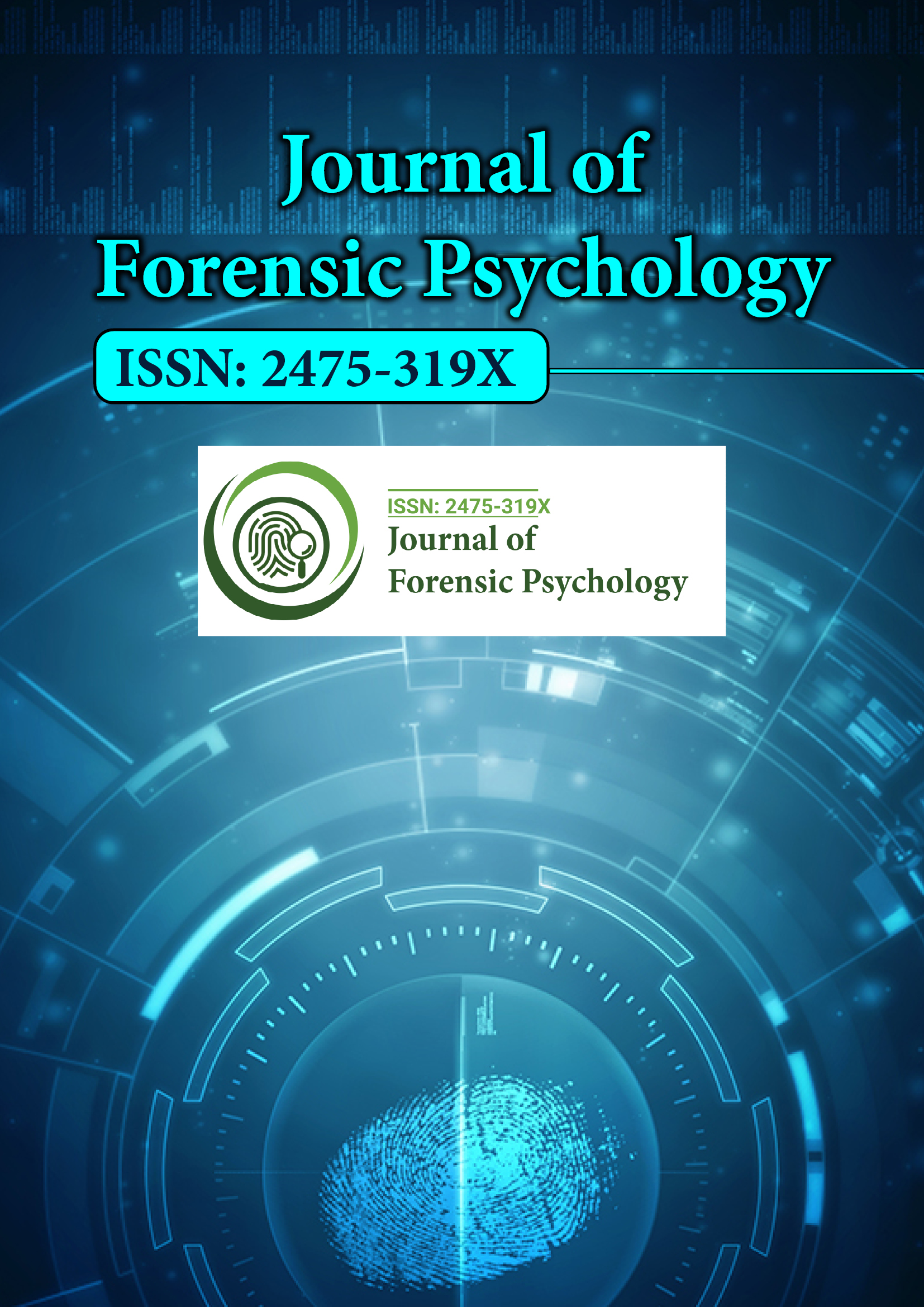Indexed In
- RefSeek
- Hamdard University
- EBSCO A-Z
- Publons
- Geneva Foundation for Medical Education and Research
- Euro Pub
- Google Scholar
Useful Links
Share This Page
Journal Flyer

Open Access Journals
- Agri and Aquaculture
- Biochemistry
- Bioinformatics & Systems Biology
- Business & Management
- Chemistry
- Clinical Sciences
- Engineering
- Food & Nutrition
- General Science
- Genetics & Molecular Biology
- Immunology & Microbiology
- Medical Sciences
- Neuroscience & Psychology
- Nursing & Health Care
- Pharmaceutical Sciences
Perspective - (2022) Volume 7, Issue 9
Social Maladjustment: A Major Risk Factor for Drug Addiction
Gary Towler*Received: 02-Sep-2022, Manuscript No. JFPY-22-18269; Editor assigned: 06-Sep-2022, Pre QC No. JFPY-22-18269; Reviewed: 23-Sep-2022, QC No. JFPY-22-18269; Revised: 30-Sep-2022, Manuscript No. JFPY-22-18269; Published: 07-Oct-2022, DOI: 10.35248/2475-319X.22.7.244
Description
Drug use is a matter of concern especially in adulthood. According to the Spanish Observatory on Drugs and Addictions, cannabis and prescription or illicit hypnosedants were the drugs that young people used the least, followed by alcohol and tobacco. Data show that teen binge drinking is still a concern. As a result, it's important to talk about the instruments for both prevention and intervention.
One risk factor associated with substance use is social, family, and personal maladjustment, which is also linked to school failure. Numerous studies have empirically proven the relationship between social, family, personal, and school factors, which can increase drug use in adolescents. Variables such as self-concept, empathy, mood, and violent behavior, among others, are risk factors for consuming substances.
There are many analytical factors of family maladjustment, including situations of family conflict, a negative family situation, overprotection and a lack of suitable communication, quality of family relationship, and overburdening of families. Moreover, a lack of control, impulsivity, permissive, authoritarian, ambiguous, or unpredictable parenting styles that employ in-process retorts to situations of disobedience, a lack of intrafamily communication, environments with some rules, and insufficient checking by an adult figure favor adolescent maladjustment in the family. These factors cause young people who do not know how to manifest troubles to counter to violence or criminal behavior such as substance use. In other side, a positive family relationship, with strong emotional development and family unity, will support a good family adaptation that will help check situations of social irrigation and therefore drug use in adolescents confirmed that some personal reasons such as self-esteem have slight effect on cannabis use, compared to family variables such as educating with standards and limits. When studying adaptation, it is vital to note that family adaptation can be a reciprocal factor of good social adaptation. Therefore, family dysfunction and poor parental management can provoke antisocial and criminal behaviors that lead to social maladaptation and promote drug use. Social maladaptation is considered by antisocial behaviors, social mismatch, patterns of criminal behavior, contexts with few social norms, and even violent norms. Another important aspect of this work is the concept of personal maladjustment. Personal maladjustment is certainly influenced by situations of family, social, and school maladjustment. Variables like personal displeasure and emotional maladjustment, psychological factors, anxiety, self-devaluation, pessimism, hypersensitivity, guilt, emotional variables, mood, and selfperception, among others. Low self-concept is one of the most important factors when discussing personal maladjustment, as it plays a conclusive role in students’ personal adjustment and school maladjustment. It is also associated with cognitive–behavioral variables and emotional.
Conclusion
To stop social maladaptation, it is significant to improve influential factors, such as those of the community or neighbourhood and those of the surrounding environment, and know how to identify group values and attitudes. It is also important to recall that various works on social maladaptation have confirmed that a greater incidence of both antisocial and more violent behaviors predicts an increased risk of drug use. Moreover, family aspects, such as not feeling supported or recognized by friends or peer groups, can be the cause of greater social maladjustment, while social support is considered a key contextual variable for the prevention of social mismatch.
Citation: Towler G (2022) Social Maladjustment: A Major Risk Factor for Drug Addiction. J Foren Psy. 7:244.
Copyright: © 2022 Towler G. This is an open-access article distributed under the terms of the Creative Commons Attribution License, which permits unrestricted use, distribution, and reproduction in any medium, provided the original author and source are credited.

